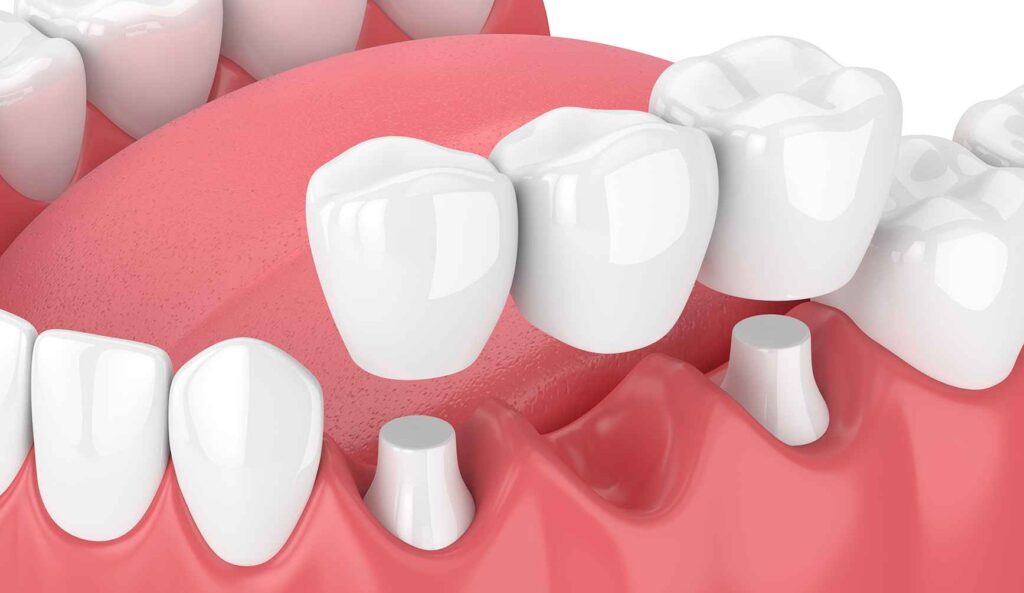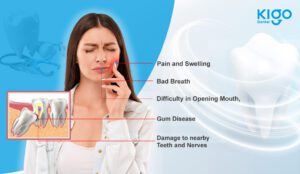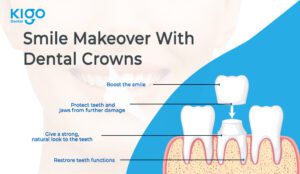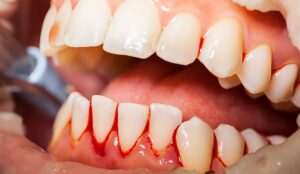Crowns & Bridges
Uncompromised quality
We use quintessential quality materials and stringent sterilisation protocols to ensure that you don't have any medical or dental complications in future.
Anxiety Free Dentistry
Experience the treatment process in a pleasant atmosphere from handpicked expert clinicians, with unparalleled clinical etiquette, to ensure exemplary health care.
Best in class outcomes
We strive our best, so that we can keep our promise of delivering the individualized smiles that we have reimagined for you with latest techniques and technologies.
"Smile confidently with our expertly crafted crowns and bridges."


Crowns and bridges are two of the most common dental restorations we do at Kigo Dental. They are used to restore the function and appearance of damaged or missing teeth.
Crowns, also known as caps, are used to cover a damaged tooth and restore its shape, size, strength, and appearance.
Bridges, on the other hand, are used to replace one or more missing teeth by attaching artificial teeth to the remaining natural teeth or dental implants.
Crowns are typically made of materials such as porcelain, ceramic, or metal alloys, and they are custom-made to fit the shape and size of the damaged tooth. The crown is cemented onto the damaged tooth, effectively covering it and restoring its function.
Crowns are often used to treat teeth that are decayed, broken, or misshapen, or to protect a weakened tooth from further damage.
Bridges, meanwhile, are made of the same materials as crowns and are also custom-made to fit the patient’s mouth. Bridges are typically used to replace one or more missing teeth, and they can be anchored to the natural teeth or to dental implants.
Bridges not only restore the appearance of the smile but also help to maintain the proper bite and prevent remaining natural teeth from shifting out of position.
Read on to know more about crowns and bridges in detail.
Crowns and bridges are often used to address a variety of dental issues, including:
Decay: If tooth decay is severe enough to weaken or damage a tooth, a crown may be needed to restore its strength and function.
Trauma: Teeth that have been chipped, cracked, or broken may require a crown to protect them and prevent further damage.
Wear and tear: Teeth that have been heavily worn down over time due to grinding or clenching may benefit from a crown to restore their size, shape, and function.
Missing teeth: Bridges are often used to replace one or more missing teeth. They rely on adjacent teeth or dental implants to anchor them in place and fill the gap left by the missing tooth.
Cosmetic issues: Crowns and bridges can also be used to improve the appearance of a tooth or teeth that are discoloured, misshaped, or otherwise aesthetically unpleasing.
Regular dental checkups: Regular dental checkups are important to ensure the health of your teeth and the condition of your crown or bridge. Your dentist can check for signs of decay, damage, or other issues that may need to be addressed.
Good oral hygiene: Proper oral hygiene prevents decay and gum disease around the crown or bridge. Brush your teeth twice daily, floss daily, and use an antibacterial mouthwash to help keep your mouth clean and healthy.
Avoid hard or sticky foods: Hard or sticky foods can damage or dislodge a crown or bridge. Try to avoid chewing on hard objects such as ice or hard candy, and cut your food into smaller pieces to avoid putting too much pressure on the restoration.
Wear a mouthguard: If you play sports or grind your teeth, wearing a mouthguard can help protect your crown or bridge from damage.
Address problems promptly: If you experience any signs of trouble, such as sensitivity, pain, or swelling around the crown or bridge, contact your dentist immediately.
Follow aftercare instructions: After your crown or bridge is placed, your dentist will give you instructions on how to care for it. Follow these instructions carefully to ensure that your restoration heals properly and lasts as long as possible.
Replace or repair damaged restorations: If your crown or bridge becomes damaged or dislodged, it is important to see your dentist as soon as possible. Your dentist can repair or replace the restoration to prevent further damage to your teeth.
Porcelain crowns: Made of porcelain, these crowns are designed to match the colour of the natural teeth and are ideal for front teeth.
Zirconia crowns: Zirconia is a type of ceramic material that is often used for crowns. Zirconia crowns are stronger than porcelain crowns.
Metal crowns: Metal crowns are typically made of gold or a base-metal alloy and have high strength and durability.
Porcelain–fused–to–metal (PFM) crowns: PFM crowns combine the strength of metal with the appearance of porcelain.
Temporary crowns: Temporary crowns are used as a placeholder while a permanent crown is being made.
Bridges: Bridges are dental restorations that are used to replace one or more missing teeth. There are several different types of bridges, including traditional bridges, cantilever bridges, and Maryland bridges.
Implant-supported bridges: Implant-supported bridges are attached to dental implants, offering a permanent solution for missing teeth.
The process of getting crowns and bridges typically involves the following steps:
Consultation: During the initial consultation, your dentist will examine your teeth and gums to determine if a crown or bridge is the right treatment option for you. They will also take X-rays and make impressions of your teeth to plan the procedure and determine the best fit for your new crown or bridge.
Preparation: To prepare your tooth for a crown or bridge, your dentist will remove any damaged or decayed tissue, and then shape the tooth to make room for the crown.
Impression: After preparing your teeth, your dentist will take a new impression to create a model of your mouth. This impression will be used to create a customized crown or bridge that will fit comfortably and securely in your mouth.
Temporary crown or bridge: In most cases, your dentist will place a temporary crown or bridge over your prepared tooth or teeth while your permanent restoration is being created. This temporary restoration will protect your tooth and allow you to eat and speak normally.
Permanent crown or bridge: Once your permanent crown or bridge is ready, your dentist will remove the temporary restoration and place the permanent one. They will adjust the fit and make any necessary final modifications to ensure a comfortable and secure fit.
Aftercare: It is important to maintain good oral hygiene practices, such as brushing and flossing, to keep your crown or bridge in good condition. Your dentist will also schedule regular follow-up appointments to monitor the health of your restoration and your surrounding teeth and gums.
The most common complications include:
Tooth sensitivity: After a crown or bridge is placed, some patients may experience temporary sensitivity to hot or cold temperatures. This sensitivity should resolve on its own within a few weeks.
Pain or discomfort: Some patients may experience pain or discomfort following the placement of a crown or bridge. This can be due to the adjustment of the bite or the pressure on the surrounding teeth and gums. Over-the-counter pain medication can usually provide relief.
Infection: In rare cases, a crown or bridge can become infected. This can cause pain, swelling, and a foul odour. Antibiotics or, in severe cases, removal of the crown or bridge may be necessary.
Loosening or dislodging: A crown or bridge can become loose or dislodge over time, especially if it was not properly cemented or if the patient has a habit of clenching or grinding their teeth. If a crown or bridge becomes loose or dislodged, it should be re-cemented or replaced as soon as possible.
Decay around the margins: Decay can develop around the margins of a crown or bridge, especially if the patient does not maintain good oral hygiene. Regular dental cleanings and check-ups can help to prevent this complication.
Avoid biting or chewing on the treated area: Patients should avoid biting or chewing on the treated area for several hours following the procedure until the dental cement used to secure the crown or bridge has fully hardened.
Soft foods only: For the first few days following the procedure, patients should stick to eating soft foods and avoid crunchy, hard, or sticky foods that can damage the crown or bridge.
Pain management: Some patients may experience some discomfort following the placement of a crown or bridge. Over-the-counter pain medication can usually provide relief, but patients should follow their dentist’s instructions for pain management.
Good oral hygiene: Patients should continue to brush and floss their teeth regularly to keep their mouth clean and healthy, and to reduce the risk of infection.
Follow-up appointments: Patients should attend any follow-up appointments as scheduled, and inform their dentist of any issues or concerns they may have.
Avoid habits that can damage the crown or bridge: Patients should avoid habits such as grinding or clenching their teeth, biting their nails, or using their teeth to open packages, as these habits can damage the crown or bridge.
At Kigo Dental, we use the latest techniques and technologies to ensure that your crowns and bridges are designed to fit seamlessly with your natural teeth and enhance the beauty of your smile.
Whether you’re dealing with a damaged tooth or missing teeth, we can help restore your smile and your confidence. Contact us today to schedule a consultation and learn more about how crowns and bridges can benefit you!
All of us here at Kigo Dental are committed to providing you with the best dental care available, and we do so with a smile.
Our entire staff, from receptionists to dental hygienists and assistants, is committed to providing you with the best quality dental care possible.
From the time you walk through the door and every time you revisit, you will experience this firsthand.
Kigo Dental has a team of experienced and skilled Orthodontists and other specialised dentists who specialize in providing high-quality dental care and treatments, utilizing the latest technologies and techniques to ensure the best outcomes for their patients.
FAQ's
Crowns and bridges are dental prosthetics used to restore the appearance and function of damaged or missing teeth. A crown is a cap that fits over an existing tooth to protect and improve its appearance. A bridge is a dental appliance that replaces one or more missing teeth by anchoring to adjacent teeth or dental implants.
The process of getting a crown or bridge typically involves two or more dental appointments. During the first appointment, the dentist will prepare the tooth or teeth and take impressions of the area. At the second appointment, the crown or bridge will be fitted and secured in place.
Crowns and bridges can be made from a variety of materials, including porcelain, ceramic, metal alloys, or a combination of materials. The material used will depend on the location of the tooth and the patient’s personal preferences.
With proper care and maintenance, crowns and bridges can last for many years, sometimes even a lifetime. The lifespan of a crown or bridge will depend on factors such as the material used, the patient’s oral hygiene habits, and the extent of wear and tear.
The benefits of crowns and bridges include improved appearance, improved bite function, and protection of remaining teeth. Crowns and bridges can also help to prevent further dental problems, such as tooth decay or gum disease.
To care for your crown or bridge, it is important to brush and floss regularly, avoid biting or chewing on hard or sticky foods, attend regular dental check-ups, and avoid habits that can damage the crown or bridge.
Blogs






Wisdom Teeth: Understanding the What, Why, and When
Wisdom teeth, also known as third molars, are often a source of concern for many people. They can lead to various dental issues, including wisdom






Smile Makeover with Dental Crowns: Types, Overview & cost
A smile is one of the most attractive features a person can have. It can boost your confidence, make you more approachable, and even improve






Beyond the smile: Exploring the crucial role of teeth in your overall health
Teeth are often linked to the ability to smile, eat, and express oneself. However, teeth serve many other vital purposes as well. Your teeth have






The Silent Threat: How Gum Diseases Lead to Tooth Loss
Having strong teeth and gums is a reflection of your entire well-being, not simply your appearance. Despite this, many people don’t give their gums the






The Importance of Orthodontists in Clear Aligner Treatment: Avoiding Problems and Ensuring Successful Outcomes
More and more individuals are seeking out clear aligner treatment as a way to improve their smile in a way that is both subtle and






Understanding Abnormal Dental Habits in Children and the Importance of Control
As parents and caregivers, we play a pivotal role in shaping our children’s habits and behaviors, especially when it comes to their oral health. However,






Wisdom Teeth: Understanding the What, Why, and When
Wisdom teeth, also known as third molars, are often a source of concern for many people. They can lead to various dental issues, including wisdom






Smile Makeover with Dental Crowns: Types, Overview & cost
A smile is one of the most attractive features a person can have. It can boost your confidence, make you more approachable, and even improve






Beyond the smile: Exploring the crucial role of teeth in your overall health
Teeth are often linked to the ability to smile, eat, and express oneself. However, teeth serve many other vital purposes as well. Your teeth have






The Silent Threat: How Gum Diseases Lead to Tooth Loss
Having strong teeth and gums is a reflection of your entire well-being, not simply your appearance. Despite this, many people don’t give their gums the






The Importance of Orthodontists in Clear Aligner Treatment: Avoiding Problems and Ensuring Successful Outcomes
More and more individuals are seeking out clear aligner treatment as a way to improve their smile in a way that is both subtle and






Understanding Abnormal Dental Habits in Children and the Importance of Control
As parents and caregivers, we play a pivotal role in shaping our children’s habits and behaviors, especially when it comes to their oral health. However,






Wisdom Teeth: Understanding the What, Why, and When
Wisdom teeth, also known as third molars, are often a source of concern for many people. They can lead to various dental issues, including wisdom






Smile Makeover with Dental Crowns: Types, Overview & cost
A smile is one of the most attractive features a person can have. It can boost your confidence, make you more approachable, and even improve






Beyond the smile: Exploring the crucial role of teeth in your overall health
Teeth are often linked to the ability to smile, eat, and express oneself. However, teeth serve many other vital purposes as well. Your teeth have






The Silent Threat: How Gum Diseases Lead to Tooth Loss
Having strong teeth and gums is a reflection of your entire well-being, not simply your appearance. Despite this, many people don’t give their gums the






The Importance of Orthodontists in Clear Aligner Treatment: Avoiding Problems and Ensuring Successful Outcomes
More and more individuals are seeking out clear aligner treatment as a way to improve their smile in a way that is both subtle and






Understanding Abnormal Dental Habits in Children and the Importance of Control
As parents and caregivers, we play a pivotal role in shaping our children’s habits and behaviors, especially when it comes to their oral health. However,






Wisdom Teeth: Understanding the What, Why, and When
Wisdom teeth, also known as third molars, are often a source of concern for many people. They can lead to various dental issues, including wisdom






Smile Makeover with Dental Crowns: Types, Overview & cost
A smile is one of the most attractive features a person can have. It can boost your confidence, make you more approachable, and even improve






Beyond the smile: Exploring the crucial role of teeth in your overall health
Teeth are often linked to the ability to smile, eat, and express oneself. However, teeth serve many other vital purposes as well. Your teeth have






The Silent Threat: How Gum Diseases Lead to Tooth Loss
Having strong teeth and gums is a reflection of your entire well-being, not simply your appearance. Despite this, many people don’t give their gums the






The Importance of Orthodontists in Clear Aligner Treatment: Avoiding Problems and Ensuring Successful Outcomes
More and more individuals are seeking out clear aligner treatment as a way to improve their smile in a way that is both subtle and






Understanding Abnormal Dental Habits in Children and the Importance of Control
As parents and caregivers, we play a pivotal role in shaping our children’s habits and behaviors, especially when it comes to their oral health. However,






Wisdom Teeth: Understanding the What, Why, and When
Wisdom teeth, also known as third molars, are often a source of concern for many people. They can lead to various dental issues, including wisdom






Smile Makeover with Dental Crowns: Types, Overview & cost
A smile is one of the most attractive features a person can have. It can boost your confidence, make you more approachable, and even improve






Beyond the smile: Exploring the crucial role of teeth in your overall health
Teeth are often linked to the ability to smile, eat, and express oneself. However, teeth serve many other vital purposes as well. Your teeth have






The Silent Threat: How Gum Diseases Lead to Tooth Loss
Having strong teeth and gums is a reflection of your entire well-being, not simply your appearance. Despite this, many people don’t give their gums the






The Importance of Orthodontists in Clear Aligner Treatment: Avoiding Problems and Ensuring Successful Outcomes
More and more individuals are seeking out clear aligner treatment as a way to improve their smile in a way that is both subtle and






Understanding Abnormal Dental Habits in Children and the Importance of Control
As parents and caregivers, we play a pivotal role in shaping our children’s habits and behaviors, especially when it comes to their oral health. However,
LET'S TALK
Book your Appointment
Appointment Timings: Mon-sat: 10:00 am- 8:00 pm |
Sun: 10:00 am - 1:00 pm
Contact
We would love to be a part of your Smile Reimagining Journey...
- 2nd Floor, QUBE, Plot No: 3-64/A, Kavuri Hills Rd, Jubilee Hills, Hyderabad, Telangana 500033
-
+91 9998884398
- kigodental@gmail.com
-
Mon - Sat: 10:00 am - 8:30 pm
Sun: 10:00 am - 1:00 pm